- Home
- Raymond Chandler
The Annotated Big Sleep Page 4
The Annotated Big Sleep Read online
Page 4
2. A surprisingly poetic way to say that it’s overcast and rainy. We’re only in the first sentence, but already readers of the time would have some clues telling them not to expect typical 1930s detective-novel writing. After all, a hard-boiled crime fiction is beginning in poetry, and the sun isn’t shining in Southern California.
Compare the no-frills opening of fellow Black Mask writer Paul Cain’s Fast One (1933), which Chandler considered a “high point in the ultra hard-boiled manner”: “Kells walked north on Spring. At Fifth he turned west, walked two blocks, turned into a small cigar store.”
3. For this stage entrance into the novel form, Chandler pulled the powder-blue suit from his first-ever hard-boiled story out of the closet: “The man in the powder-blue suit—which wasn’t powder-blue under the lights of the Club Bolivar—was tall, with wide-set gray eyes, a thin nose, a jaw of stone” (“Blackmailers Don’t Shoot,” 1933). He adds the extended blue color coordination, the display handkerchief, dress shoes (brogues), and fancy socks. “Clocks” here indicate an ornamental pattern, not timepieces. Has there ever been a visualization of Chandler’s dapper Marlowe, as described in this opening scene? There’s no fedora, and the trench coat comes out only later, during a downpour. It’s a rather profound reversal of expectations: the Southern California sky isn’t blue, but Marlowe’s attire is.
4. Scholar Charles J. Rzepka notes that “neat, clean, shaved and sober” is “army-talk for ‘ready for inspection.’ ” Certainly our narrator gives a soldierly impression: Eddie Mars will think so, as will the butler Norris.
The figure of the detective as a working man on a job, in contrast to the well-heeled amateurs of the English mystery tradition, was well established by 1939—so much so that Marlowe could share with his readers an ironic appreciation of how well he was dressed for the part. The voice wryly acknowledges that this presentability isn’t the norm.
5. Adjusted for inflation, four million 1939 dollars would be worth almost $70 million today. Los Angeles has been home to great fortunes since the railroads brought the first millionaires from the east seeking warmer climes—the Los Angeles Herald reported rich men “pouring in here by the score” in 1905—and their numbers increased through the early years of the century with successive booms in real estate and oil. Sternwood’s four million would not rank him at the top of this class: real-life oilman Edward L. Doheny was worth more than ten times as much at the peak of his career.
6. Some of the most extravagant mansions in Los Angeles belonged to its oil barons. As a vice president of Dabney Oil, Chandler would have seen some of this opulence from the inside. Not far from the fictional Sternwood mansion is Greystone, the fifty-five-room Tudor mansion in Beverly Hills that oil tycoon Edward L. Doheny commissioned in 1925 for his son, Ned. Greystone took two years and cost $4 million to build: limestone and slate were hauled across the country for its walls and roof, and its grounds included stables, a ten-car garage, terraced gardens, plush lawns, and a greenhouse. From Greystone one could see the oil derricks that had made the Doheny fortune. Still standing, Greystone appears as the millionaire home in two iconic films of the past twenty years: the Coen brothers’ Big Sleep tribute The Big Lebowski, and Paul Thomas Anderson’s There Will Be Blood, based on Upton Sinclair’s Oil! Note the parallel compound proper names: Grey/stone, Stern/wood.
Greystone mansion, Beverly Hills
7. The figure of the knight will return at key places in the story. It is centrally symbolic and quite complex, even in this seemingly simple moment of Marlowe gazing on the frozen scene. In his reflection on this image, Marlowe can’t help but implicate himself in the knight’s task despite his bemused detachment. His wording leaves it open to interpretation whether he is criticizing—albeit ironically—the knight’s heroic effort, or whether he’d be more motivated than the chaste knight to free the naked lady. In either case, the working-class detective’s take on this piece of fancy stained-glass art is suitably unimpressed.
In “The Curtain” (Black Mask, 1936), one of the stories Chandler “cannibalized” for TBS, private detective Carmady stands in the mansion’s hallway among “several suits of time-darkened armor.” By filling the armor with a knight, Chandler deepens the symbolism.
Both the figure of the knight and the first sentence’s description by negativity—“the sun not shining” (also not in earlier versions of the story)—recall a key poem for TBS, John Keats’s “La Belle Dame sans Merci”:
O what can ail thee, knight at arms,
Alone and palely loitering?
The sedge has wither’d from the lake,
And no birds sing.
With the sun not shining, and no birds sing. Keats’s “beautiful lady without pity” is one of modern literature’s first femmes fatales (see note 4 on this page). His elegy for a knight lost to a tricky woman’s love will resound and rebound throughout the novel, in subtle and unexpected ways. As for the assertion by negativity, Chandler loves the effect: see the ends of Chapters Four, Six, Thirteen, and Twenty-Five.
Visor back to be sociable, fiddling with the knots: Sir John Everett Millais’s The Knight Errant (1870), one of the many reimaginings of the medieval chivalric tradition in the late nineteenth and early twentieth centuries, bears close resemblance to the Sternwoods’ “stained-glass romance.”
8. One of the top American luxury automobiles since 1899. Packard continued to thrive during the Depression, introducing its most luxurious model yet, the Packard Twelve, in the early 1930s. In Farewell, My Lovely Marlowe calls it “the kind of car you wear your rope pearls in.”
Packard dealership, 1930s
9. The foothills of the Santa Monica Mountains descend into LA from the north.
A PRIVATE DETECTIVE ENTERS THE WORLD OF A RICH CLIENT
Aside from “a well-to-do female client walks into the shabby office” (see Chapter Eleven), this is possibly the most used opening trope in crime fiction.
Dashiell Hammett’s opening for The Dain Curse preceded TBS by ten years: “While I waited, I looked around the room, deciding that the dull orange rug under my feet was probably both genuinely oriental and genuinely ancient, that the walnut furniture hadn’t been ground out by machinery, and that the Japanese pictures on the wall hadn’t been selected by a prude.”
In Ross Macdonald’s 1966 classic Black Money, SoCal detective Lew Archer approaches a private club: “I’d been hearing about the Tennis Club for years, but I’d never been inside of it….Just parking my Ford in the asphalt lot beside the tennis courts made me feel like less of a dropout from the affluent society.”
In Steph Cha’s gender-flipping homage to Chandler, Follow Her Home (2013), protagonist Juniper Song’s opening interior monologue runs thus: “It was about ten o’clock on a Friday in mid-July, the Los Angeles night warm and dry….I was wearing a slinky black dress, black patent leather platform pumps, silver cascade earrings, and a black lambskin clutch. I was perfumed, manicured, and impeccably coiffed. I was everything a half-employed twentysomething should be on the sober end of a Friday night. I was calling on an open bar at Luke’s new apartment.”
10. The United States captured the Mexican state of Alta California and most of what is now the American Southwest in the Mexican-American War (1846–48). California was conquered in 1848, and for the next few decades Los Angeles was a frontier town known for its violence and lawlessness. If the Sternwoods have been in Los Angeles since the war, they would be one of the older Anglo families.
11. The narration is given in interior monologue: we’re in the main character’s head, but the words sound like speech. In the 1920s and ’30s, interior monologue was being experimented with and expanded by modernist masters like James Joyce, Virginia Woolf, and William Faulkner, followed a little later by Chester Himes in If He Hollers Let Him Go (1945) and Ralph Ellison in Invisib
le Man (1952). Readers may notice how the sequence of descriptions steeps them in the distinct perspective of our main character as he sharpens his thoughts into commentary.
The form is now indissociable from the idea of the hard-boiled detective story, but it was not universally used in the early hard-boiled days—Hammett’s Sam Spade does not narrate, for instance, although his Continental Op does. Others who employed first-person narration (Hammett, James M. Cain, even the earlier Chandler) did not give their protagonists as much interiority as Marlowe is imbued with. By way of comparison, the first story narrated by a hard-boiled detective, Carroll John Daly’s “Three Gun Terry” (Black Mask, 1923), begins: “My life is my own, and the opinions of others don’t interest me; so don’t form any, or if you do, keep them to yourself.”
12. Women’s hairstyles were getting longer in the 1930s as compared with flapper styles of the 1920s, when the bob was all the rage.
Women’s hairstyles of the 1920s
13. Oranges, long a symbol of LA’s abundance, are typically associated with sunshine, fertility, and good health. Not so here. Marlowe will later compare Carol’s eyes to almonds and Vivian’s to prunes—two other products of Southern California orchards.
Crate label for Old Mission oranges
14. Despite her self-proclaimed cuteness, Carmen’s whole appearance is threatening: gray, expressionless eyes; predatory, glistening teeth; pale and unhealthy visage. Carmen bears a striking resemblance to Gabrielle Dain Leggett in Hammett’s The Dain Curse. Gabrielle, too, is elfish and animalistic, with sharp teeth. The two also share a taste for laudanum (see note 12 on this page).
The stunning Martha Vickers as Carmen in the 1946 film (Photofest)
15. Chandler elsewhere gives Marlowe’s height as just over six feet tall, and in Chapter Ten he gives his weight as 190 pounds. This might not seem as impressive to modern readers, in our climate of steroidal enhancements and generally increasing individual mass. By way of contemporary comparison, Marlowe has twenty pounds on the formidable grandfather of James Thurber’s comic memoir My Life and Hard Times (1933), who stands “taller than six feet and weigh[s] almost a hundred and seventy pounds” as he obstructs the evacuation from an imagined town flood. And outfielder Carl Furillo, who patrolled right field for the Brooklyn Dodgers in the 1940s and ’50s, is a dead ringer for Marlowe at six feet, 190: to the admiring sportswriter Roger Kahn, reflecting on Furillo in his classic baseball memoir The Boys of Summer (1972), the outfielder had the look of an “indomitable centurion”—not a bad description of the impression Marlowe might give.
16. Marlowe’s first line is, suitably, a wisecrack. This first exchange sets the tone for the novel’s famously sparkling dialogue. The line presented a problem when Humphrey Bogart was cast for the film. Bogart was only five feet nine. The problem was solved by rewriting Carmen’s line to read, “You’re not too tall, are you?” to which Bogey replies, “Well, I tried to be.”
SHARPENED TONGUES
The wisecracking private eye is, of course, a staple of the genre. As Elvis Cole, the protagonist in Robert Crais’s LA-based crime series, says, “She asked me why I always had something flip to say. I said that I didn’t know, but having been blessed with the gift, I felt obliged to use it.” The term “wisecrack” itself dates from the 1920s, as does its association with what was then called “tough-guy” fiction (hard-boiled, Hemingway, Hammett) and its coolly cynical tough-guy characters. A flippant attitude and a deflating wit were part of the arsenal of the hard-boiled dick: often outnumbered, outmuscled, and outranked, he could still level the playing field by cracking wise. The wisecrack was not restricted to tough-guy fiction, however; it was becoming the national style. Mae West was famously sexy, W. C. Fields was a cantankerous drunk, and Groucho Marx had a greasepaint mustache, but they were also among the wittiest people in America. The wisecrack reigned supreme at the Algonquin Round Table with knights of wit like Dorothy Parker, Alexander Woollcott, and Robert Benchley trading bon mots, American style. “I know I talk too smart,” Marlowe himself will say in Farewell, My Lovely. “It’s in the air nowadays.” Constance Rourke’s classic 1931 study of American humor noted that “the comic rejoinder has become every man’s tool.” In a time of Depression and hardship, the wisecrack coupled cynicism with humor in an empowering way—and it was free. As the sublime Mrs. Parker quipped, “The first thing I do in the morning is brush my teeth and sharpen my tongue.”
17. In a letter, Chandler wrote that Marlowe “has dark brown hair, brown eyes, and the expression ‘passably good looking’ would not satisfy him in the least.” Throughout the course of the Marlowe novels women generally throw themselves at him. “Do you do much of this sort of thing?” the glamorous Helen Grayle will ask, alongside him on a couch, in Farewell, My Lovely. “Practically none,” Marlowe responds. “I’m a Tibetan monk, in my spare time.” In TBS both Sternwood sisters will pursue him relentlessly (and want to kill him), and at the novel’s climax there will be a sudden romantic liaison with a third woman.
18. To be “in the doghouse” is to be in disgrace or out of favor. Readers would have recognized this as the type of nickname given to boxers. Irish-Americans were especially prominent in professional boxing before the Second World War; hence the Irish surname.
19. prizefighter: A professional boxer.
20. sleuth: The term is derived from “sleuthhound,” or bloodhound, a dog used for tracking. It was first used as slang for “detective” in the 1870s.
21. comforter: A pacifier.
22. tessellated floor: A floor with a mosaic design.
23. So far we’ve only had a false name for the narrator and central character, whose mind we are in. The novel’s first readers would not have known what his real name was until the butler names him here. In the great heroic epics, the hero’s name and true character often remain hidden until revealed by a distinctive sign or work.
24. Carmen is a particularly apt name for the General’s volatile daughter. It resonates with the violent, seductive Gypsy at the heart of Prosper Mérimée’s eponymous Romantic novella (1845), which Chandler considered a “perfect” work, and the opera Bizet based upon it (1875). The name’s Latin and Old French roots invoke a cluster of relevant meanings: song, incantation; to chant or cast a magic spell; to charm. Enchantment, beauty, and danger: we have the first hint of the femme fatale. Keats’s enchanted knight-at-arms was captured by his lady’s “faery’s song.”
The name also resonates with “carmine,” a bright red color, like blood and, like Chandler’s character, “of very high saturation and low brilliance” (Webster’s Second). The color red is, perhaps obviously, associated with the archetype of the femme fatale.
25. Reversing what Hammett’s Continental Op says about Gabrielle Dain Leggett: “I said she might still be young enough for a spanking to do her good.”
TWO1
We went out at the French doors and along a smooth red-flagged path that skirted the far side of the lawn from the garage. The boyish-looking chauffeur had a big black and chromium sedan out now and was dusting that. The path took us along to the side of the greenhouse and the butler opened a door for me and stood aside. It opened into a sort of vestibule that was about as warm as a slow oven. He came in after me, shut the outer door, opened an inner door and we went through that. Then it was really hot. The air was thick, wet, steamy and larded with the cloying smell of tropical orchids in bloom.2 The glass walls and roof were heavily misted and big drops of moisture splashed down on the plants. The light had an unreal greenish color, like light filtered through an aquarium tank. The plants filled the place, a forest of them, with nasty meaty leaves and stalks like the newly washed fingers of dead men. They smelled as overpowering as boiling alcohol under a blanket.
The butler did his best to get me through without being smacked in the face by the sodden l
eaves, and after a while we came to a clearing in the middle of the jungle, under the domed roof. Here, in a space of hexagonal flags, an old red Turkish rug was laid down and on the rug was a wheel chair, and in the wheel chair an old and obviously dying man watched us come with black eyes from which all fire had died long ago, but which still had the coal-black directness of the eyes in the portrait that hung above the mantel in the hall. The rest of his face was a leaden mask, with the bloodless lips and the sharp nose and the sunken temples and the outward-turning earlobes of approaching dissolution. His long narrow body was wrapped—in that heat—in a traveling rug and a faded red bathrobe. His thin clawlike hands were folded loosely on the rug, purple-nailed. A few locks of dry white hair clung to his scalp, like wild flowers fighting for life on a bare rock.
The butler stood in front of him and said: “This is Mr. Marlowe, General.”3
The old man didn’t move or speak, or even nod. He just looked at me lifelessly. The butler pushed a damp wicker chair against the backs of my legs and I sat down. He took my hat with a deft scoop.
Then the old man dragged his voice up from the bottom of a well and said: “Brandy, Norris. How do you like your brandy, sir?”
“Any way at all,” I said.4
The butler went away among the abominable plants. The General spoke again, slowly, using his strength as carefully as an out-of-work show-girl uses her last good pair of stockings.5
“I used to like mine with champagne. The champagne as cold as Valley Forge6 and about a third of a glass of brandy beneath it. You may take your coat off, sir. It’s too hot in here for a man with blood in his veins.”7

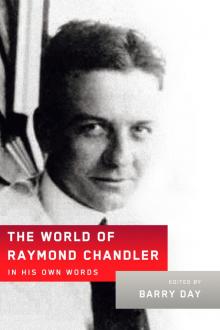 The World of Raymond Chandler: In His Own Words
The World of Raymond Chandler: In His Own Words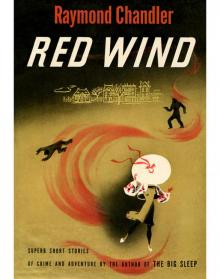 Red Wind: A Collection of Short Stories
Red Wind: A Collection of Short Stories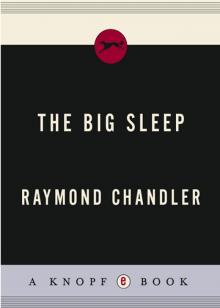 The Big Sleep
The Big Sleep Killer in the Rain
Killer in the Rain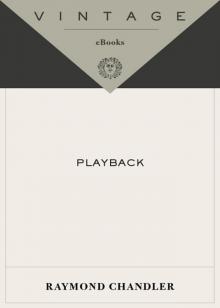 Playback
Playback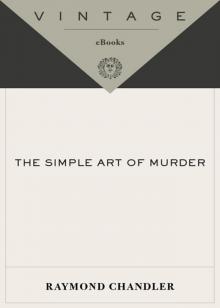 The Simple Art of Murder
The Simple Art of Murder The Bronze Door
The Bronze Door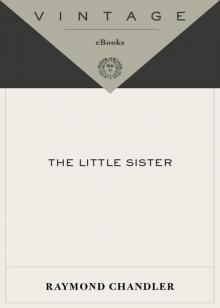 The Little Sister
The Little Sister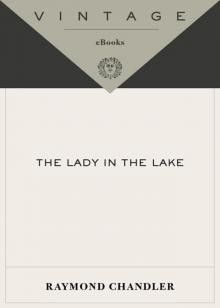 The Lady in the Lake
The Lady in the Lake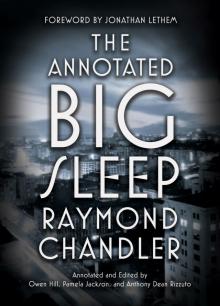 The Annotated Big Sleep
The Annotated Big Sleep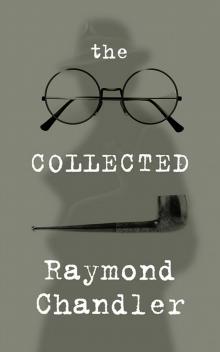 The Collected Raymond Chandler
The Collected Raymond Chandler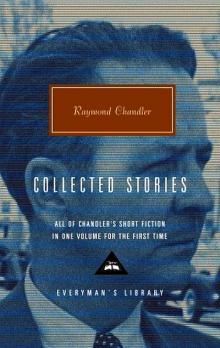 Collected Stories (Everyman's Library)
Collected Stories (Everyman's Library)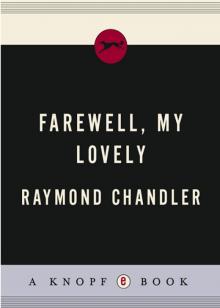 Farewell, My Lovely
Farewell, My Lovely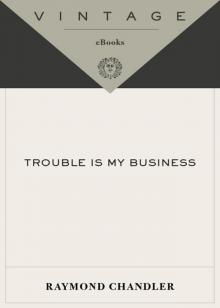 Trouble Is My Business
Trouble Is My Business The Long Goodbye
The Long Goodbye The Lady in the Lake pm-4
The Lady in the Lake pm-4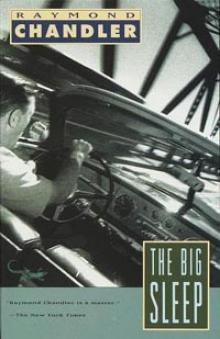 The Big Sleep pm-1
The Big Sleep pm-1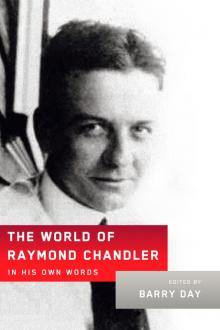 The World of Raymond Chandler
The World of Raymond Chandler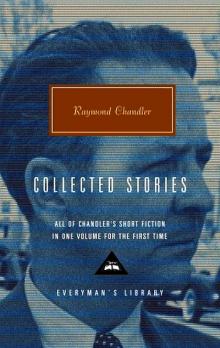 Collected Stories of Raymond Chandler
Collected Stories of Raymond Chandler Red Wind
Red Wind Farewell, My Lovely pm-2
Farewell, My Lovely pm-2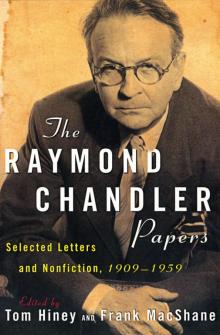 The Raymond Chandler Papers: Selected Letters and Nonfiction, 1909–1959
The Raymond Chandler Papers: Selected Letters and Nonfiction, 1909–1959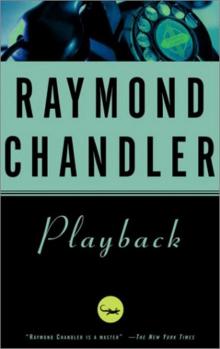 Playback pm-7
Playback pm-7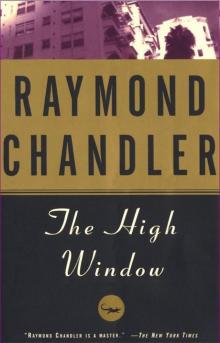 The High Window pm-3
The High Window pm-3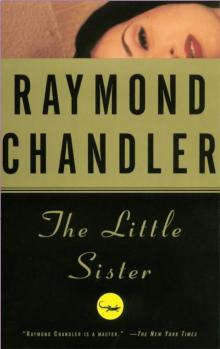 The Little Sister pm-5
The Little Sister pm-5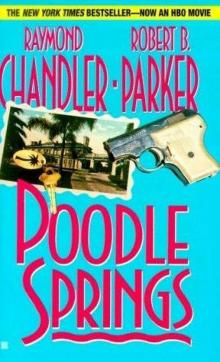 Poodle Springs (philip marlowe)
Poodle Springs (philip marlowe)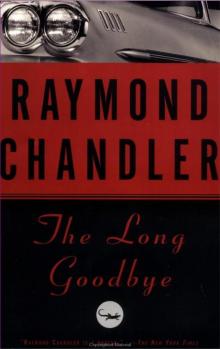 The Long Goodbye pm-6
The Long Goodbye pm-6